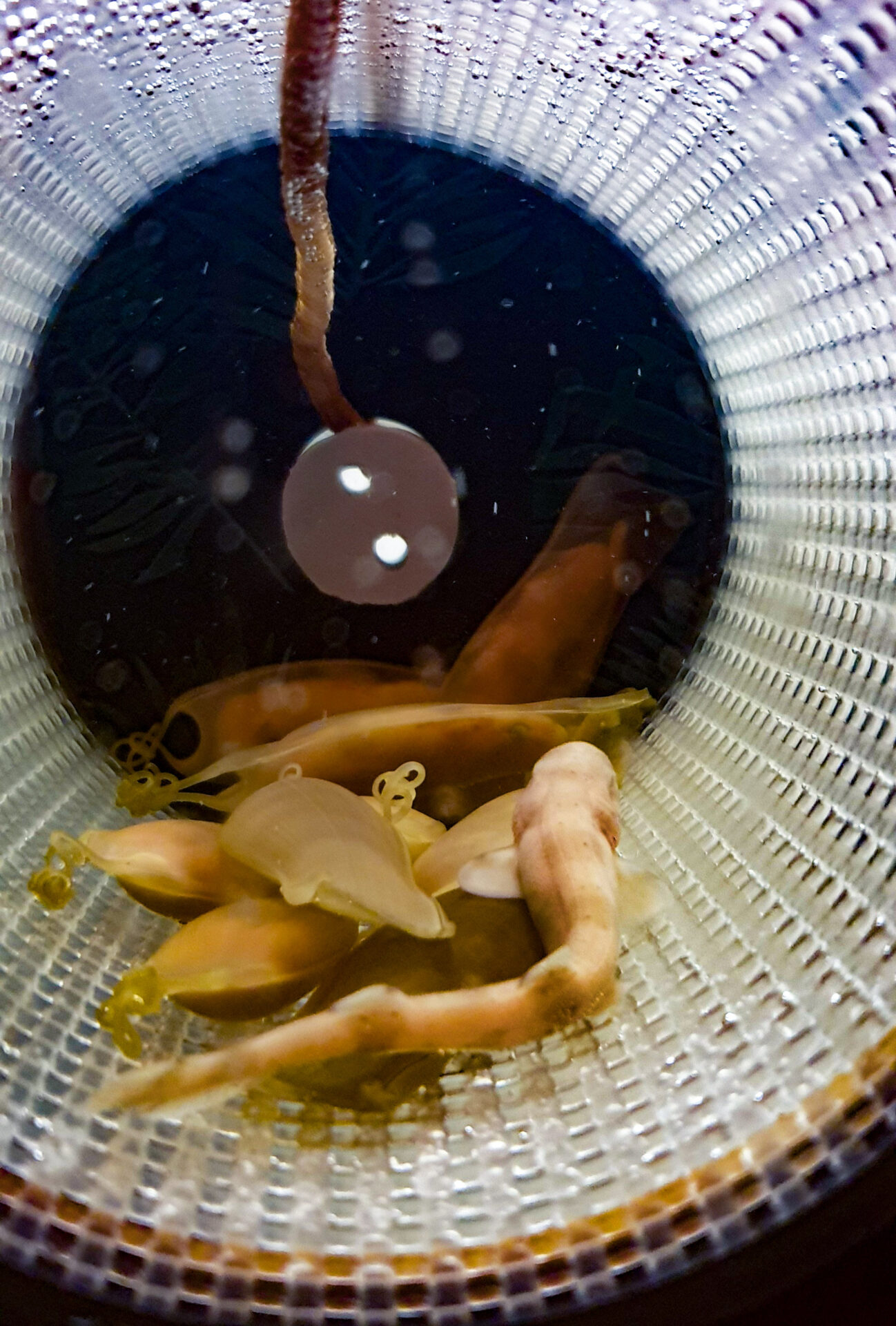Baby sharks, are you growing well?
The first part of my project involves testing the effects of warming and acidification on the embryonic development of small-spotted catshark. But how do we know if they are growing well?
In the clip above, we see a small-spotted catshark in its egg.
Illuminated from behind, the egg of the small spotted catshark reveals a very active embryo. Each week, we took photos of all the embryos and determined their length, the amount of their vitelline nutrient reserve (the dark ovoid part) and their stage of development. Here, you can clearly see the gill filaments near the head and the outline of the fins along the body.
In the above clip, the amount of oxygen consumed after freezing by a small-spotted catshark embryo is being measured.
As the embryo grows, the gill filaments are reabsorbed, making way for gills. The embryo will circulate the water in its egg by actively pumping it. However, its movements will attract the attention of predators. A healthy embryo can easily camouflage its presence for several minutes. But how? It will stop all movement, even breathing, which is called freezing behaviour. So we also measured its duration by mimicking the presence of a predator by manipulating the eggs. When the embryo holds its breath, it accumulates an “energy debt” that it will have to repay. To assess this debt, we measured the amount of oxygen consumed after freezing. The greater the quantity, the greater the rate of consumption. In the video, we can clearly see the contractions of the gills.

Newly hatched small-spotted catshark. Photo © Noémie Coulon
Finally, we determined the duration of embryonic development, from egg-laying to hatching. The newborns were then measured and weighed every month.
